Health
“It’s not how much we give, but how much we put in our giving”
Health
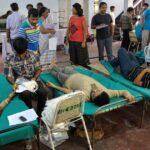
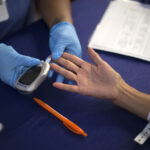


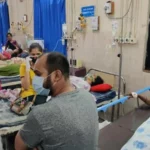

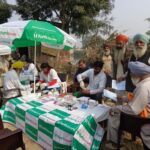
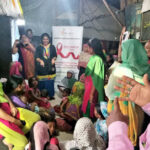
ISWAR embodies the right to equitable access to healthcare, including the underlying determinants like access to safe drinking water, proper sanitation and adequate supply of safe and nutritious food, health occupational and environmental conditions and medical support. The main aim of health interventions of ISWAR is universal access to public healthcare services in remotest areas of the country, integrated comprehensive primary healthcare, with emphasis on services addressing women’s and children’s health. As an organization, we are committed to ensuring that underprivileged people live healthy lives.
In India it is estimated that there are 2 to 2.5 million cancer patients at any given point of time with about 0.7 million new cases coming every year and nearly half die every year. Two-third of the new cancers is presented in advance and incurable stage at the time of diagnosis. More than 60% of these affected patients are in the prime of their life between the ages of 35 and 65 years. 50% of all male cancers are tobacco related and 25% in female (total 34% of all cancers are tobacco related). More than 70% of disease burden is related life-style factors such as food & beverage practices, personal habits, infections, tobacco consumption and social customs. In addition, urbanization, industrialization and increasing life-span are also known as the cause of the cancer globally. There are predictions of incidence of 7-fold increase in tobacco related cancer morbidity in between 1995-2025.
Our primary health programs are conducted through free medical camp can be considered as a life-saving program that aims to provide free medical and surgical services to poor communities living in rural or urban areas by a mobile team with varieties of medical specialized services. ISWAR is driven by strong ethics of medicine who believe that it is the moral responsibility and obligation to treat each patient regardless of their incomes, race, or social status.
The main objective of a medical camp is to provide preventive and initial care to people on the physical activities, food, nutrition safe-drinking water, health and hygienic lifestyle, sanitation, general health, reproductive health of women, child immunization, anaemia, cervical cancer, menstrual among students through school programs.
The 75% of Indian homes have at least one drug user sometimes as young as 13. Out of total drug abused person 13% of the people involved in drug and substance abuse in India are aged below 20 years. Drug abuse can have serious, even life-threatening, complications, such as drug overdose, alcohol poisoning, trauma, and suicidal or violent behaviour can result from damage to the brain or to other parts of the body. The effects of substance abuse are cumulative, significantly cause costly to social, physical, mental, and public health problems. All substance use, even experimental use, puts adolescents at risk of short-term problems, such as accidents, fights, unwanted sexual activity, overdose also interferes with adolescent brain development. Adolescents are vulnerable to increased risk of developing long-term consequences, such as mental health disorders, underachievement in school, a substance use disorder, and higher rates of addiction, if they regularly use alcohol, marijuana, nicotine, or other drugs during adolescence.
According to experts, many people die due to lack of minor surgeries (Bell weather surgery) and globally too in 2010, an estimated 16.9 million people died (32% of all deaths worldwide) due to lack of access to surgery and anaesthesia. The poor people cannot afford for cost incurred for surgery, which suffer from fatal diseases and undergo unforeseen medical emergencies every day. Families of poor are often left drained out their all savings and health insurance often does not cover heart ailments, cochlear implants and kidney diseases. Moreover, even for the conditions that they do cover, several insurers have set a ceiling on the expenses related to patient bed charges, cost of surgery, doctor’s fees, and this may not cover the entire cost of the treatment. For most families, a medical emergency can drain their financial, mental and physical strengths, leaving them helpless and despondent. Often, families push themselves into debt by borrowing money.
An estimated around 1.8 lakh persons suffer from renal failure every year, however the number of renal transplants done is around 6000 only. An estimated 2 lac patients die of liver failure or liver cancer annually in India, about 10-15% of which can be saved with a timely liver transplant. Hence about 25-30 thousand liver transplants are needed annually in India but only about one thousand five hundred are being performed. Similarly, about 50000 persons suffer from Heart failures annually but only about 10 to 15 heart transplants are performed every year in India. In case of Cornea, about 25000 transplants are done every year against a requirement of 1 lakh. Organ Donation is donating a donor’s organs like heart, liver, kidneys, intestines, lungs, pancreas, eyes and skin after the donor dies, for the purpose of transplanting them into another person who is in need of an organ. Transplants can save or transform the life of a person. One organ and tissue donor can help transform the lives of more than 10 people.
The rate of diabetes diagnoses is increasing around world, including in India. India has the second highest total population in the world at more than 1.3 billion people. There are two types of diabetes such as type-1 diabetes which is an autoimmune condition that results from our body attacking beta cells in the pancreas that makes insulin and type-2 diabetes is caused by insulin resistance and pancreas slowly losing the ability to make insulin. Type 1 diabetes increase in India at the rate of 3-5% yearly and type-2 diabetes increase at the 8: yearly. There are some reasons which causes increase in diabetes prevalence in India such as lack of education about diabetes prevention, vegetarian food choice, increased consumption of processed meats, low consumption of fruits, nuts, seeds, and whole grains, less exercise, more screen time, tobacco use, environmental pollution, high blood pressure ,high cholesterol levels, obesity, family history of diabetes etc.
According to WHO, “safe blood and blood products and their transfusion are critical aspects of care and public health. They save millions of lives and improve the health and quality of life of many patients every day but many patients requiring transfusion do not have timely access to safe blood. Providing safe and adequate blood should be an integral part of every country’s national health care policy and infrastructure”.
Today, most medical care depends on a steady supply of blood from donors, as one in seven people entering the hospital need blood. An adequate amount of blood is needed in all health care facilities to meet the urgent need for patients facing trauma and other lifesaving procedures, such as blood transfusions. Blood donors by donating blood, save someone’s life and is vital service to the community. Making a difference in the lives of others can boost a donor’s sense of well-being.
Blood donation helps the donor in several ways such as stimulates blood cell production, blood donation helps to reduce risk of heart attack and cancer, donation of blood, burns calories & helps in weight loss, blood donation helps to maintain healthy liver, prevents hemochromatosis and helps to maintain iron level and helps you to complete your social responsibilities.
IF YOU WOULD LIKE TO CONTRIBUTE CLICK FOR PAYMENT MODE OPTION
QUICK LINK
Health
Welfare
Disaster
Violence
Environment
Livelihood
Spirituality
RECENT POSTS

NGO’s prominent role in India for Social Welfare
CONTACT
H.Off: House no. 22/634, Ground Floor. Lane – 22, Madangir DDA Flat, South Delhi – 110062, India
Website: www.iswar.org
Phone no. +91-836883832
E mail: iswarbharat@gmail.com
Copyrights © ISWAR.org. All rights are reserved.
Terms of Use